The situation/context/intent
I try to run a task (on windows 10) which activate or deactivate auto logon depending on the NetConnection name (to see if I am home). The script works and is executed, but I guess the task is too late, since auto logon use the pre-existing value over the one set by the script. Or, is it that the script is delayed by the Wi-Fi, which maybe still launching, allowing auto logon to do its things or something like that?
What I tried
Well first, I look on the internet, but all I could find was how to activate auto logon and nothing near what I try to do.
Then, on stackoverflow, I did found something call gina.dll. Turn out, it has bean replace by credential provider. Which look like an aventure better avoided and, I think, it is just the interface to logon anyway.
Then I tried to use the event, kernel-Boot id 30, which, should be monitoring the start up process. "Maybe this would be earlier than the default startup", I thought. But, I observe the same result as with "on startup". (Maybe it is the same thing as "on startup".)
The script (PowerShell)
$RegPath = "HKLM:\SOFTWARE\Microsoft\Windows NT\CurrentVersion\Winlogon"
if((Get-NetConnectionProfile | select -ExpandProperty Name) -ceq "The connection name"){
Set-ItemProperty $RegPath "AutoAdminLogon" -Value "1" -type String
}else{
Set-ItemProperty $RegPath "AutoAdminLogon" -Value "0" -type String
}
The exported task
<?xml version="1.0" encoding="UTF-16"?>
<Task version="1.4" xmlns="http://schemas.microsoft.com/windows/2004/02/mit/task">
<RegistrationInfo>
<Date>2022-01-02T17:37:14.7356723</Date>
<Author>LAPTOP\admin</Author>
<Description>Connexion automatique à admin</Description>
<URI>\Tâche personalisé\Connexion automatique</URI>
</RegistrationInfo>
<Triggers>
<BootTrigger>
<Enabled>true</Enabled>
</BootTrigger>
</Triggers>
<Principals>
<Principal id="Author">
<UserId>I probably do not want that out there</UserId>
<LogonType>Password</LogonType>
<RunLevel>HighestAvailable</RunLevel>
</Principal>
</Principals>
<Settings>
<MultipleInstancesPolicy>StopExisting</MultipleInstancesPolicy>
<DisallowStartIfOnBatteries>false</DisallowStartIfOnBatteries>
<StopIfGoingOnBatteries>true</StopIfGoingOnBatteries>
<AllowHardTerminate>false</AllowHardTerminate>
<StartWhenAvailable>false</StartWhenAvailable>
<RunOnlyIfNetworkAvailable>false</RunOnlyIfNetworkAvailable>
<IdleSettings>
<StopOnIdleEnd>true</StopOnIdleEnd>
<RestartOnIdle>false</RestartOnIdle>
</IdleSettings>
<AllowStartOnDemand>true</AllowStartOnDemand>
<Enabled>true</Enabled>
<Hidden>false</Hidden>
<RunOnlyIfIdle>false</RunOnlyIfIdle>
<DisallowStartOnRemoteAppSession>false</DisallowStartOnRemoteAppSession>
<UseUnifiedSchedulingEngine>true</UseUnifiedSchedulingEngine>
<WakeToRun>false</WakeToRun>
<ExecutionTimeLimit>PT1M</ExecutionTimeLimit>
<Priority>7</Priority>
</Settings>
<Actions Context="Author">
<Exec>
<Command>PowerShell</Command>
<Arguments>C:\ScriptPersonnalise\ConnexionAutomatique.ps1</Arguments>
</Exec>
</Actions>
</Task>

